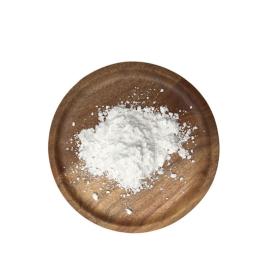-
Categories
-
Pharmaceutical Intermediates
-
Active Pharmaceutical Ingredients
-
Food Additives
- Industrial Coatings
- Agrochemicals
- Dyes and Pigments
- Surfactant
- Flavors and Fragrances
- Chemical Reagents
- Catalyst and Auxiliary
- Natural Products
- Inorganic Chemistry
-
Organic Chemistry
-
Biochemical Engineering
- Analytical Chemistry
- Cosmetic Ingredient
-
Pharmaceutical Intermediates
Promotion
ECHEMI Mall
Wholesale
Weekly Price
Exhibition
News
-
Trade Service
This article is the original of Translational Medicine Network, please indicate the source of reprinting
Written by Mia
TGF-β signaling is necessary for
CD8+ T cells to differentiate into tissue-resident memory T cells (TRM).
Although higher frequencies of CD8+ TRM cells in the tumor microenvironment are associated with a better prognosis, blocking TGF-β generally improves prognosis rather than worsens
.
On October 13, 2022, Liu Yong's team at Xiangya Hospital of Central South University and Zhang Nu's team at the University of Texas published a research paper entitled "TGF-β-dependent lymphoid tissue residency of stem-like T cells limits response to tumor vaccine" in Nature Communications
。 The study revealed a link between TRM and stem cell-like T cells,which inhibits the migration and effector differentiation of stem cell-like T cells, resulting in weakened
anti-tumor immunity.
#Sec1
Research background
01
Continuous exposure to antigens, such as tumor antigens, can induce T cell exhaustion and reduce effector function
.
Depleted CD8+ T cells are heterogeneous, while less depleted subsets have stem-like characteristics
.
These stem cell-like CD8+ T cells express the transcription factor TCF-1 (T cytokine-1) and maintain the CD8+ response
during chronic antigen exposure.
Importantly, these stem cell-like CD8+ T cells respond to immune checkpoint blockade therapy and are associated
with the efficacy of oncology vaccines.
However, the signals that control the maintenance, differentiation, and migration of these stem-like T cells are not fully understood
.
Transforming growth factor β (TGF-β) is generally considered an immunosuppressive factor
.
Blocking the TGF-β signaling pathway has been shown to promote tumor control
by targeting tumor stromal compartments or CD4+ T cell-mediated vascular remodeling.
In addition, systemic blocking of TGF-β synergistically with oncology vaccines or PD-1/PD-L1 blockade promotes CD8+ T cell response
in mouse models.
Since most studies on TGF-β on CD8+ T cells do not have knowledge of binding stem-like T cells, it is critical
to re-examine the role of TGF-β on tumor-specific CD8+ T cells, especially stem cell-like CD8+ T cells.
Tissue-resident memory T cells (TRM) are a unique population of memory T cells that are separated from blood circulation and maintained
in a self-sustaining manner.
TRM was originally discovered in acute infection models and has now been identified as an important component of
tissue-specific immunity.
Surprisingly, recent studies have shown that stem cell-like CD8+ T cells produced after chronic viral infection have similar properties to TRM, that is, they are mostly confined to secondary lymphoid organs (such as the spleen and lymph nodes) and non-circulating
.
However, it remains unclear whether a similar situation
exists in the immune oncology environment.
Most previous studies of tumor-specific CD8+ T cells have focused on tumor-infiltrating lymphocytes (TILs
).
Although cancer immune cycle models are widely accepted, tumor-specific CD8+ T cells in lymphoid organs have largely underappreciated
.
TGF-β signaling to CD8+ T cells is known to be critical
for the differentiation and maintenance of TRM after acute infection.
In tumor immunity,TRM-like signaling is generally positively correlated
with the ability of TILs to control tumors.
TGF-β promotes T RM, TRM limits tumor growth, and TGF-β blockade improves tumor control, but how to fully coordinate this information remains a mystery
.
Overview of the study
02
This study demonstrated the role
of tumor-draining lymph node TDLNs as a reservoir of tumor specific stem cell-like CD8+ T cell residence.
Using a mouse melanoma model, the researchers found that in tumor-draining lymph nodes (TDLN), rather than in the tumor itself, stem-like CD8+ T cells differentiated into TRMs
in a TGF-β and tumor antigen-dependent manner.
In T-cell-specific TGF-β receptor-conditioned knockout mice, CD8+ T cells significantly enhanced their response to tumor vaccines
After receiving melanoma-specific epitope vaccine, most tumor-specific CD8+ T cells remained in a stem cell-like state, but some cells lost their TRM state, differentiated into CX3CR1+ effector CD8+ T cells in TDLN, and subsequently migrated into tumors
.
Disruption of TGF-β signaling alters the dynamics of these developmental processes, ultimately improving the migration
of effector CD8+ T cells to tumors.
The results also highlight two unique features of TDLNs in tumor immunotherapy: (1) TDLNs serve as reservoirs for host stem cell-like T cells
.
(2) TDLNs as traps
that limit the migration/differentiation of stem cell-like T cell activity.
Similar to the tumor environment, the researchers previously demonstrated that TGF-β promotes the retention
of dry-like CD8+ T cells within lymphfollicles during chronic viral infection.
Thus, TGF-β-dependent lymphoid tissue-resident procedures are not tumor-specific and may represent a universal feature of
Tcf-1+CD8+ T cells.
Summary of the study
03
In summary, TDLN stem cell-like T cells transition from TGF-β-dependent TRM differentiation to the development of anti-tumor migration effector factors after tumor vaccination, and targeted TGF-β blockade can promote this transition
.
Resources:
#Sec1
Note: This article is intended to introduce the progress of medical research and cannot be used as a reference
for treatment options.
If you need health guidance, please go to a regular hospital
.
Recommendations, live streams/events
October 21 14:00-17:30 Shanghai
Brain nervous system disease diagnosis and drug discovery industry salon
Scan the QR code to participate for free
Nov 01-02 09:00-17:30 Chongqing
The first Southwest Single Cell Omics Technology Application Forum
Scan the QR code to participate for free
November 25-27 09:00-17:30 Shanghai
The 4th Shanghai International Cancer Congress
Scan the code to participate







